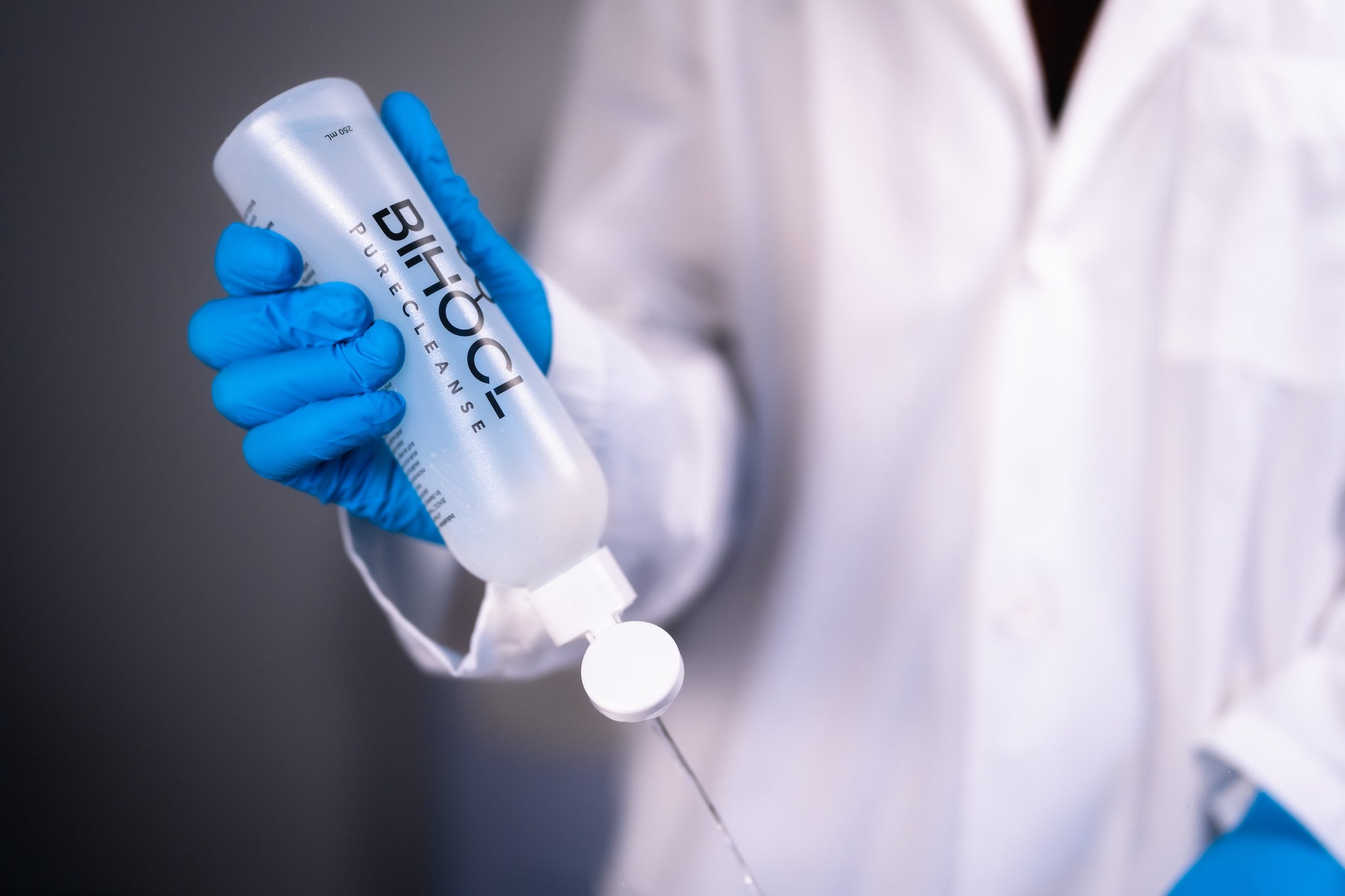Answering 4 Big Questions on Biofilms
In this blog, we explore four big questions surrounding biofilms and learn how a multimodal approach addresses biofilm-related challenges, emphasizing the importance of early intervention and innovative strategies for optimal wound management and improved wound healing outcomes.
Every patient wants to heal as quickly as possible. Clinicians want to make as much of an impact in this effort as possible. It’s fair to say that is the common goal. So let’s extend our focus beyond the superficial aspects of whatever the injury or issue may have been, to consider the underlying factors that may impede the wound healing process.
One of the most critical factors—and a growing concern—is the presence of a biofilm, a thin-yet-resilient layer of bacteria that forms on the surface of the wound. The evolving landscape of wound care has become increasingly attentive to biofilm disruption through advanced research techniques and scientific innovation.
This article aims to explore the nature of biofilms, address some key questions, and discuss the implications of biofilm presence in wound management.

1. What are biofilms and why do they matter?
Biofilms, dating back as far as 3.25 billion years ago, represent a collection of microbial cells encased in a polysaccharide-based matrix, permanently attached to a surface⁸. These matrices may also include noncellular substances such as mineral crystals, corrosion particles, clay or silt particles, or blood components⁸. Biofilms can develop on various surfaces, including living tissues, industrial or potable water system piping, and natural aquatic ecosystems⁸.
The formation of these diverse bacterial ecosystems results in individual bacteria becoming resilient and resistant to treatment⁸. In comparison to free-floating bacteria, biofilms can be up to 1,500 times more resistant to antibiotics⁸. The National Institutes of Health suggested in 2002 that over 80 percent of microbial infections in the body could be attributed to biofilms⁸. In addition to other illnesses and drug resistance, bacterial biofilms have been linked to infective endocarditis and pneumonia in people with cystic fibrosis⁸. While biofilms are a very natural phenomena, they present multiple challenges to physicians, including but not limited to antibiotic resistance and ineffective wound treatment⁸.
2. How do biofilms impact wounds and chronic wound formation?
Bacterial biofilm contamination is a major contributor to chronic wounds⁴⁻⁵. When surveying chronic versus acute wounds via microscopy, 30 of 50 (60%) contained biofilms, compared with 1 of 16 (6%) in acute wounds⁶.
Biofilms can be especially problematic in chronic wounds, such as diabetic foot ulcers, pressure ulcers, and venous leg ulcers⁷. These types of wounds often have a reduced blood flow, which means that oxygen and other substances necessary for healing are not being delivered effectively⁷. Biofilms develop rapidly and must be targeted early in wound treatment⁶. Research indicates wound care treatments that effectively target and inactivate biofilms lead to better wound healing outcomes⁴. Studies show that multimodal wound treatment strategies are necessary to effectively target wound biofilms⁵⁻⁶. Multimodal wound treatment strategies, encompassing wound debridement, antimicrobial treatment application, and continuous biofilm disruption, are essential for successful wound management⁶.
3. How does pressurized wound cleansing impact biofilms?
Pressurized wound therapy with irrigation has demonstrated significant positive impacts on biofilms and wound outcomes⁶. Research indicates that this therapeutic approach plays a crucial role in reducing the bacterial burden in chronic wounds, a common contributor to delayed healing⁶. Moreover, pressurized wound therapy has been found effective in preventing the formation of biofilms, which are known to impede the wound healing process⁶.
The mechanism involves disrupting the biofilm's extracellular polysaccharide matrix through debridement, a process achievable through the application of mechanical pressurized therapy⁶. This disruption not only inhibits the growth of biofilms but also hinders the reattachment of bacterial pathogens, promoting a more favourable environment for wound healing⁶. Therefore, pressurized wound cleansing emerges as a valuable strategy in the multifaceted approach to wound management, offering a promising avenue for enhancing outcomes in chronic wounds⁶.
4. How does hypochlorous acid impact biofilm formation?
Hypochlorous acid emerges as a promising tool in targeting biofilms through its demonstrated efficacy in disruption and elimination, as supported by existing research¹⁻³. This powerful acid is capable of mechanically removing biofilms formed by microbes, along with the extracellular polymeric matrix materials associated with these microbial communities³. Studies suggest that the application of hypochlorous acid is particularly valuable in the management of chronic wounds, where biofilm presence is a significant impediment to the healing process¹⁻³.
The multifaceted action of hypochlorous acid involves reducing bacterial counts, penetrating, and effectively disrupting the protein matrix of wound pathogen biofilms¹⁻³. This targeted approach not only addresses the surface-level biofilm but also reaches into the intricate structures, making hypochlorous acid a versatile and efficient solution for combating biofilm-related challenges in wound care¹⁻³.

BIHOCL PureCleanse: A Multimodal Approach
The BIHOCL™ PureCleanse™ system is formulated in a way that integrates a multimodal approach to wound treatment, within a singular product. The pure hypochlorous acid (HOCl) solution dismantles and removes microorganisms by nature, but when debridement pressure is applied at an optimal PSI, it can become even more effective.
BIHOCL PureCleanse solution is ideal to be used in conjunction with a pressurized delivery system such as the JetOx™-ND Hydro-Debridement Jet Lavage Wound Cleansing Kit to effectively cleanse and debride the wound. This immediately starts removing debris and, like all pure HOCl solutions, helps to prevent the formation of biofilms.
Final Thoughts
In the realm of wound care, the focus has expanded beyond surface-level treatment to address underlying factors hindering healing, with a notable concern being the presence of biofilm⁴⁻⁹. This thin layer of bacteria, forming on wound surfaces, poses challenges to physicians due to its resistance to antibiotics and potential links to various infections⁴⁻⁹. Biofilms, a natural but formidable phenomenon, particularly affect chronic wounds, where reduced blood flow hampers essential healing elements⁹.
Overall, studies emphasize the prevalence of biofilms in chronic wounds and underscore the importance of early intervention in wound management⁹. Pressurized wound therapy and the use of hypochlorous acid emerge as critical strategies¹⁻⁹. Pressurized therapy not only lowers bacterial burden but also prevents biofilm formation, disrupting their matrices⁶. Hypochlorous acid, supported by research, proves effective in biofilm elimination by mechanically removing them and penetrating the protein matrix¹⁻³.
As a pure hypochlorous acid solution, BIHOCL PureCleanse integrates both approaches, offering a multimodal solution for cleansing, debridement, and effective irrigation that is as safe as it is powerful. It addresses the challenges posed by biofilms, showcasing the significance of advanced techniques in enhancing wound care outcomes.
References
- Sakarya, S., Gunay, N., Karakulak, M., Ozturk, B., & Ertugrul, B. (2014). Hypochlorous acid: an ideal wound care agent with powerful microbicidal, antibiofilm, and wound healing potency. Wounds, 26(12), 342-350.
- Robson, M. C., Payne, W. G., Ko, F., Mentis, M., Donati, G., Shafii, S. M., ... & Bassiri, M. (2007). Hypochlorous acid as a potential wound care agent: part II. Stabilized hypochlorous acid: its role in decreasing tissue bacterial bioburden and overcoming the inhibition of infection on wound healing. Journal of burns and wounds, 6.
- Robson, M. C. (2014). Treating chronic wounds with hypochlorous acid disrupts biofilm. Today’s Wound Clinic, 8(9), 20-21.
- Wolcott, R. (2015). Disrupting the biofilm matrix improves wound healing outcomes. journal of wound care, 24(8), 366-371.
- Ammons, M. C. (2010). Anti-biofilm strategies and the need for innovations in wound care. Recent patents on anti-infective drug discovery, 5(1), 10-17.
- Bradley, B. H., & Cunningham, M. (2013). Biofilms in chronic wounds and the potential role of negative pressure wound therapy: an integrative review. Journal of Wound Ostomy & Continence Nursing, 40(2), 143-149.
- Donlan, R. M. (2002). Biofilms: microbial life on surfaces. Emerging infectious diseases, 8(9), 881.
- Vidyasagar, A. (2016, December 22). What are biofilms? LiveScience. Retrieved December 26, 2022, from https://www.livescience.com/57295-biofilms.html
- Sibbald, R. G., Orsted, H. L., & Schultz, G. S. (2012). Chronic wounds: pathophysiology and current treatments. The Lancet, 379(9811), 135-147.






